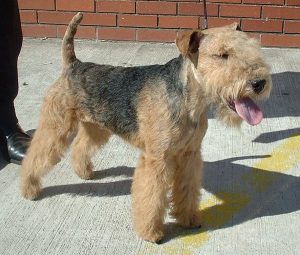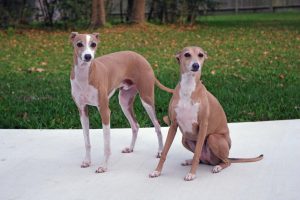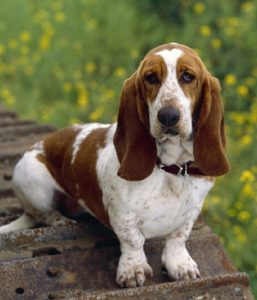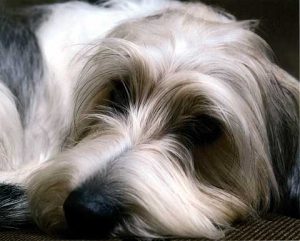Beagle

Rescues Afghan Hound Basenji Basset Hound Beagle Black and Tan Coonhound Bloodhound Borzoi Dachshund Foxhound, American Foxhound, English Greyhound Harrier Ibizan Hound Irish Wolfhound Norwegian Elkhound Otterhound Petit Basset Griffon Vendeen Pharaoh Hound Plott Hound Bluetick Coonhound Redbone Coonhound Rhodesian Ridgeback Saluki Scottish Deerhound Sloughi Treeing Walker Coonhound Whippet American English Coonhound Cirneco dell'Etna Portuguese Podengo Pequeno
Farmington MI 48336 United States

Rescues Afghan Hound Basenji Basset Hound Beagle Black and Tan Coonhound Bloodhound Borzoi Dachshund Foxhound, American Foxhound, English Greyhound Harrier Ibizan Hound Irish Wolfhound Norwegian Elkhound Otterhound Petit Basset Griffon Vendeen Pharaoh Hound Plott Hound Bluetick Coonhound Redbone Coonhound Rhodesian Ridgeback Saluki Scottish Deerhound Sloughi Treeing Walker Coonhound Whippet American English Coonhound Cirneco dell'Etna Portuguese Podengo Pequeno
Gulfport MS 39501 United States
No phone number listedNo phone number listed
We are unique in that we are a pro hunting rescue. I am a big advocate of hunting companions bein...

P.O. Box 554 Boys Town NE 68010 United States
BBRH is located in Omaha, NE and KC area. We are dedicated to rescuing and re-homing bassets, bea...

P.O. Box 515 Blairstown NJ 07825 United States
Safe Hounds Beagle Rescue is an all-volunteer breed rescue located in Blairstown, NJ. Our adoptab...

6910 Jack Rabbit Rd. Las Cruces NM 88012 United States
575-373-1543575-373-1543

New York NY 10009 United States

Rescues Afghan Hound Basenji Basset Hound Beagle Black and Tan Coonhound Bloodhound Borzoi Dachshund Foxhound, American Foxhound, English Greyhound Harrier Ibizan Hound Irish Wolfhound Norwegian Elkhound Otterhound Petit Basset Griffon Vendeen Pharaoh Hound Plott Hound Bluetick Coonhound Redbone Coonhound Rhodesian Ridgeback Saluki Scottish Deerhound Sloughi Treeing Walker Coonhound Whippet American English Coonhound Cirneco dell'Etna Portuguese Podengo Pequeno
215 High St. Fairport Harbor OH 44077 United States
Hound Dog Rescue Corporation (HDRC) provides for the rescue, rehabilitation, and re-homing, of un...

Rescues Afghan Hound Basenji Basset Hound Beagle Black and Tan Coonhound Bloodhound Borzoi Dachshund Foxhound, American Foxhound, English Greyhound Harrier Ibizan Hound Irish Wolfhound Norwegian Elkhound Otterhound Petit Basset Griffon Vendeen Pharaoh Hound Plott Hound Bluetick Coonhound Redbone Coonhound Rhodesian Ridgeback Saluki Scottish Deerhound Sloughi Treeing Walker Coonhound Whippet American English Coonhound Cirneco dell'Etna Portuguese Podengo Pequeno
Findlay OH 45840 United States
We are a 501(c)(3) Non-Profit Rescue and Sanctuary for homeless Dogs located near Findlay, Ohio. ...

Rescues Afghan Hound Basenji Basset Hound Beagle Black and Tan Coonhound Bloodhound Borzoi Dachshund Foxhound, American Foxhound, English Greyhound Harrier Ibizan Hound Irish Wolfhound Norwegian Elkhound Otterhound Petit Basset Griffon Vendeen Pharaoh Hound Plott Hound Bluetick Coonhound Redbone Coonhound Rhodesian Ridgeback Saluki Scottish Deerhound Sloughi Treeing Walker Coonhound Whippet American English Coonhound Cirneco dell'Etna Portuguese Podengo Pequeno
Lone Pine Rd. Washington PA 15301 United States
Next to Pit Bulls, hound dogs are the hardest to place. The population of these dogs is profound ...

Rescues -Dogs Afghan Hound Basenji Basset Hound Beagle Black and Tan Coonhound Bloodhound Borzoi Dachshund Foxhound, American Foxhound, English Greyhound Harrier Ibizan Hound Irish Wolfhound Norwegian Elkhound Otterhound Petit Basset Griffon Vendeen Pharaoh Hound Plott Hound Bluetick Coonhound Redbone Coonhound Rhodesian Ridgeback Saluki Scottish Deerhound Sloughi Whippet American English Coonhound Cirneco dell'Etna Portuguese Podengo Pequeno
Simpsonville SC 29681 United States
We adopt to various areas within SC
Beagle and Basset Rescue | Make a Difference
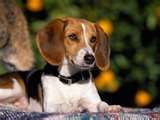
Breed Group : HOUND
Origin : England
Average Height : 13" - 15"
Average Weight : 18 - 30 lbs.
Life Span : 10 - 15 years
Photo Courtesy of : Beagles and Buddies
Size
1 2 3 4 5 6 7 8 9 10Energy
1 2 3 4 5 6 7 8 9 10Intelligence
1 2 3 4 5 6 7 8 9 10Ease of Training
1 2 3 4 5 6 7 8 9 10Hypo-Allergenic
1 2 3 4 5 6 7 8 9 10Shedding
1 2 3 4 5 6 7 8 9 10Good with Kids
1 2 3 4 5 6 7 8 9 10Good with Other Pets
1 2 3 4 5 6 7 8 9 10Guard Dog
1 2 3 4 5 6 7 8 9 10
Beagle Rescue Organizations

Rescues Afghan Hound Basenji Basset Hound Beagle Black and Tan Coonhound Bloodhound Borzoi Dachshund Foxhound, American Foxhound, English Greyhound Harrier Ibizan Hound Irish Wolfhound Norwegian Elkhound Otterhound Petit Basset Griffon Vendeen Pharaoh Hound Plott Hound Bluetick Coonhound Redbone Coonhound Rhodesian Ridgeback Saluki Scottish Deerhound Sloughi Treeing Walker Coonhound Whippet American English Coonhound Cirneco dell'Etna Portuguese Podengo Pequeno
Farmington MI 48336 United States

Rescues Afghan Hound Basenji Basset Hound Beagle Black and Tan Coonhound Bloodhound Borzoi Dachshund Foxhound, American Foxhound, English Greyhound Harrier Ibizan Hound Irish Wolfhound Norwegian Elkhound Otterhound Petit Basset Griffon Vendeen Pharaoh Hound Plott Hound Bluetick Coonhound Redbone Coonhound Rhodesian Ridgeback Saluki Scottish Deerhound Sloughi Treeing Walker Coonhound Whippet American English Coonhound Cirneco dell'Etna Portuguese Podengo Pequeno
Gulfport MS 39501 United States
No phone number listedNo phone number listed
We are unique in that we are a pro hunting rescue. I am a big advocate of hunting companions bein...

P.O. Box 554 Boys Town NE 68010 United States
BBRH is located in Omaha, NE and KC area. We are dedicated to rescuing and re-homing bassets, bea...

P.O. Box 515 Blairstown NJ 07825 United States
Safe Hounds Beagle Rescue is an all-volunteer breed rescue located in Blairstown, NJ. Our adoptab...

6910 Jack Rabbit Rd. Las Cruces NM 88012 United States
575-373-1543575-373-1543

New York NY 10009 United States

Rescues Afghan Hound Basenji Basset Hound Beagle Black and Tan Coonhound Bloodhound Borzoi Dachshund Foxhound, American Foxhound, English Greyhound Harrier Ibizan Hound Irish Wolfhound Norwegian Elkhound Otterhound Petit Basset Griffon Vendeen Pharaoh Hound Plott Hound Bluetick Coonhound Redbone Coonhound Rhodesian Ridgeback Saluki Scottish Deerhound Sloughi Treeing Walker Coonhound Whippet American English Coonhound Cirneco dell'Etna Portuguese Podengo Pequeno
215 High St. Fairport Harbor OH 44077 United States
Hound Dog Rescue Corporation (HDRC) provides for the rescue, rehabilitation, and re-homing, of un...

Rescues Afghan Hound Basenji Basset Hound Beagle Black and Tan Coonhound Bloodhound Borzoi Dachshund Foxhound, American Foxhound, English Greyhound Harrier Ibizan Hound Irish Wolfhound Norwegian Elkhound Otterhound Petit Basset Griffon Vendeen Pharaoh Hound Plott Hound Bluetick Coonhound Redbone Coonhound Rhodesian Ridgeback Saluki Scottish Deerhound Sloughi Treeing Walker Coonhound Whippet American English Coonhound Cirneco dell'Etna Portuguese Podengo Pequeno
Findlay OH 45840 United States
We are a 501(c)(3) Non-Profit Rescue and Sanctuary for homeless Dogs located near Findlay, Ohio. ...

Rescues Afghan Hound Basenji Basset Hound Beagle Black and Tan Coonhound Bloodhound Borzoi Dachshund Foxhound, American Foxhound, English Greyhound Harrier Ibizan Hound Irish Wolfhound Norwegian Elkhound Otterhound Petit Basset Griffon Vendeen Pharaoh Hound Plott Hound Bluetick Coonhound Redbone Coonhound Rhodesian Ridgeback Saluki Scottish Deerhound Sloughi Treeing Walker Coonhound Whippet American English Coonhound Cirneco dell'Etna Portuguese Podengo Pequeno
Lone Pine Rd. Washington PA 15301 United States
Next to Pit Bulls, hound dogs are the hardest to place. The population of these dogs is profound ...

Rescues -Dogs Afghan Hound Basenji Basset Hound Beagle Black and Tan Coonhound Bloodhound Borzoi Dachshund Foxhound, American Foxhound, English Greyhound Harrier Ibizan Hound Irish Wolfhound Norwegian Elkhound Otterhound Petit Basset Griffon Vendeen Pharaoh Hound Plott Hound Bluetick Coonhound Redbone Coonhound Rhodesian Ridgeback Saluki Scottish Deerhound Sloughi Whippet American English Coonhound Cirneco dell'Etna Portuguese Podengo Pequeno
Simpsonville SC 29681 United States
We adopt to various areas within SC
-
The origin of the Beagle is uncertain. It's thought that it may have been derived from the French word begueule, meaning open throat, or from the Old English word 'beag' ~ meaning small. Another theory is that they think it may have come from the French word beugler, meaning to bellow, or the German word begele, meaning to scold.
While the Beagle history is somewhat cloudy ~ Greek documents from 400 B.C. describe Beagle-like dogs, and the Romans may have brought small rabbit-hunting hounds with them to England and bred them with the local hounds.
William the Conqueror reportedly brought Talbot hounds (now extinct) to England during the Norman Conquest in 1066. These dogs are thought to be the ancestors of the Beagle and the Foxhound.
During the reigns of Edward II (1307 - 1327) and Henry VII (1485 - 1509), extremely small beagles, called Glove Beagles became popular in England.
They reportedly were small enough to be held in a gloved hand. There's also mention of Singing Beagles, named for their bugling voices. Today some breeders have attempted to breed a smaller version of Beagles known as "Pocket Beagles".
English hunters would take packs of these dogs out on the hunt tracking rabbits, hare, pheasant, quail and other small animals. The breed probably originated as a cross between the Harrier and other types of English hounds.
Elizabeth I (1533 - 1603) kept packs of Pocket Beagles that stood only 9 inches tall. These small dogs were depicted in paintings as short-legged and pointy nosed. They were used for hunting, but quickly fell out of favor because they weren't very fast.
In the 1700s, fox hunting became popular in England, and the Beagle fell out of favor as the larger Foxhound became the dog of choice. If it hadn't been for the farmers in England, Ireland, and Wales who continued to keep packs to hunt rabbit and hare, the breed might have become extinct at that time.
In the mid-1800s Reverend Phillip Honeywood established a pack of Beagles in Essex, England. These dogs are thought to be the ancestors of the modern Beagle. Rev. Honeywood bred for hunting skills, not looks. Thomas Johnson, a fellow Englishman, was responsible for breeding Beagles who were both attractive and good hunters.
At about the same time, American breeders started importing Beagles from England to improve the looks of their own dogs. Many of the English imports were bred to an average height of 15 to 17 inches at the shoulder so they could hunt fox. American breeders started breeding them to be smaller for rabbit hunting.
Of interest is the "Patch" Beagle strain developed by Willet Randall in New York around 1880. The line is primarily white with a very large tri-colored spot. They were very popular in the 1940s and 1950s because they were able to run so fast. Today, many people call lemon and white or red and white beagles "Patch" beagles.
The American Kennel Club and the first Beagle specialty club both were founded in 1884.
Today.........Beagles have become one of the most popular breeds in the USA.
Beagles are known to hunt alone, as well as in pairs or in packs.
In 1916, 5members of the National Beagle Club purchased 508 acres in Western Loudoun County, Virginia, to hold field trials. They formed a corporation called 'Institute Corporate' to purchase, own then lease it to the Institute Foundation ~ that today continues to maintain the property for the National Beagle Club, where many activities of the National Beagle Club are held. -
• Active, outgoing, fun loving but also can be stubborn.
• Require patient, creative, consistent training.
• Not yappy, but if provoked know how to howl/bay [at the moon, perhaps?]
• As a pack dog ~ Beagles get along well with other animals and their human friends.
• "Beagle Brigade": As a scenthound ~ with an amazing sense of smell ~ Beagles are regularly used, for drug & contraband sniffing at airport baggage claim areas [22 USA International airports to date].
• Do well in apartments.
• Can suffer from separation anxiety, and destructiveness, if left alone for long periods.
• Can be difficult to housetrain. Crate training is recommended.
• Leaving in the back yard is also not recommended: digging, escaping, howling will ensue.
• They are a popular breed in research laboratories, so they are often stolen/kidnapped. Make sure you have them 'micro-chipped'.
• Can be independant. Love food ~ hence the nick name 'chow hound'. *Beagles can become very protective of their food.
• Not the best protection or guard dog ~ just too friendly to everyone they meet.
• Gentle, sweet, funny.
• Have a smooth, dense double coat that is resistant to rain. Need weekly brushing.
• Shedder.
• Known for ear infections.
• Great with children.



